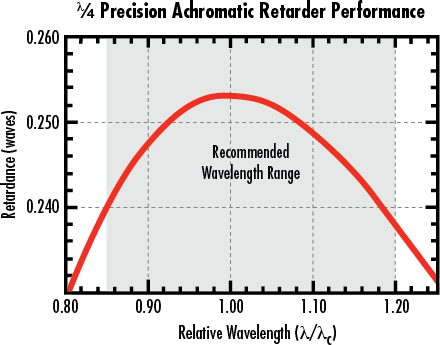
精密アクロマティックポリマー波長板 (位相差板)は、慎重に整列させたポリマー積層を精密なN-BK7のガラス基板2枚で両側から挟み、ラミネート加工して作られます。共通的な可視と近赤外波長に対し、標準的なλ/4板とλ/2板をご用意しています。広波長帯域に対して所定のリタデーション特性を実現するアクロマティック (= 多波長) デザインです。また、斜入射に対して得られる位相差の安定性にとりわけ優れ、入射角が±10°ずれた場合でも位相ずれは1% 未満に収まります。どの精密アクロマティックポリマー波長板 (位相差板)も、高速軸を示すマーキングの付いた金枠内に固定されます。

1-800-363-1992
もしくは 現地オフィス一覧をご覧ください
クイック見積りツール
商品コードを入力して開始しましょう
Copyright 2025, エドモンド・オプティクス・ジャパン株式会社
[東京オフィス] 〒113-0021 東京都文京区本駒込2-29-24 パシフィックスクエア千石 4F
[秋田工場] 〒012-0801 秋田県湯沢市岩崎字壇ノ上3番地